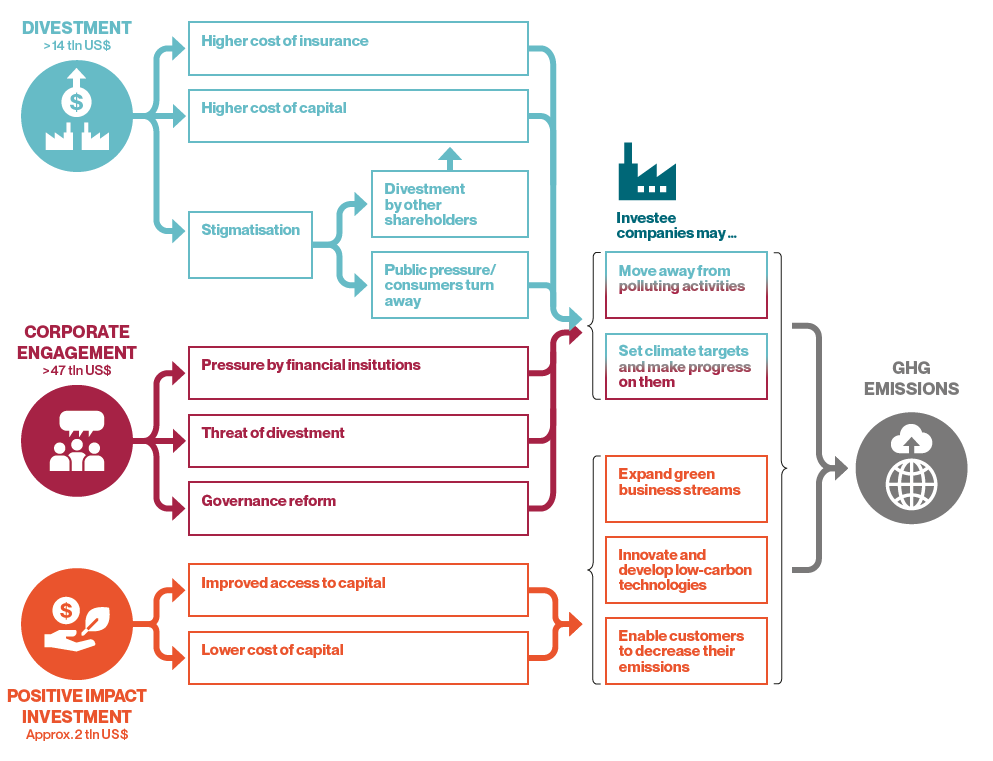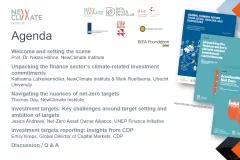Financial institution’s climate-related investment targets have rapidly grown in recent years. In this report, we provide insights into the magnitude and ambition of these targets, and investigate their relationship with GHG emissions in the real economy. Specifically, this report maps out the financial sector’s climate-related investment targets against a range of indicators, such as monetary investments in ‘green’ projects, and required ‘green’ investments and GHG emission reductions. It thereby considers both climate-related investment pledges made by individual financial institutions as well as those made by major finance-related international cooperative initiatives (ICIs).
Main Findings:
Financial institution’s climate-related investment targets have rapidly grown in recent years. We find financial institutions with cumulative assets of at least USD 47 trillion under management are currently committed to climate-related investment targets. This represents 25% of the global financial market, which is around USD 180 trillion. The number and growth of such targets is significant and represents considerable momentum – even if the individual targets vary in their ambition and do not cover all assets under management.
While the trend and efforts of the financial sector are promising, it should be noted that financial institutions do not have full control over their investees’ emissions. Reducing the carbon intensity of a portfolio by divesting, with the objective of aligning it with the Paris Agreement, does not necessarily always lead to emission reductions in the real economy, as others can invest in the emission intensive assets that were sold. Only if a large share of the financial sector sets and works to actualise robust climate-related investment targets and effectively implements them, investees have to react and reduce their emissions. Currently, most financial institutions that have set such targets are located in Europe, the United States of America, and Australia. To align all financial flows with the Paris Agreement temperature goal, it is crucial that institutions in other parts of the world also commit to ambitious investment targets.
We distinguish between three main types of climate-related investment targets – or mechanisms - that financial institutions can use to influence global GHG emissions: divestment, positive impact investment, and corporate engagement. These mechanisms influence the actions investee companies must take – and correspondingly, global GHG emissions – in different ways (see Figure).
Cause effect relation between the different mechanisms, investee companies and global GHG emissions.
We identified a number of factors at the financial institution, company, and country level that can increase the likelihood that a climate-related investment targets will have an impact on actual emission levels. These include for example the size of a financial institution (measured by assets under management) and whether the targeted investee company has previous experience with ESG. The more these factors point in the right direction, the more likely that investment targets will lead to emissions reductions.
The factors play out differently per asset class and per target type. For example, a divestment target related to a government bond share may produce a different outcome than a divestment from a corporate bond; and corporate engagement is usually more effective if there is direct access to investee’s management.
Insights into the factors or impact conditions may support financial institutions in setting potentially more effective targets, policymakers to consider effective regulation and the scientific community, and the wider public, to better assess financial sector targets.






